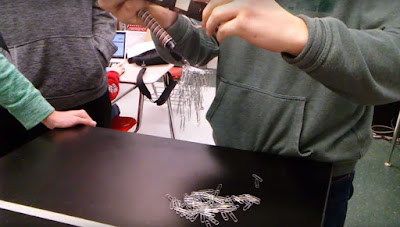HS-PS1-7: Mass is conserved in chemical reactions
HS-PS1-7: Use mathematical representations to support the claim that atoms, and therefore mass, are conserved during a chemical reaction. PS1-7 Evidence Statements The video below discusses the decomposition reaction of hydrogen peroxide and uses a balanced chemical equation and structural formulas to explain why the number of atoms is conserved in a chemical reaction. An experiment to help teach the concept of conservation of mass can be found here .
